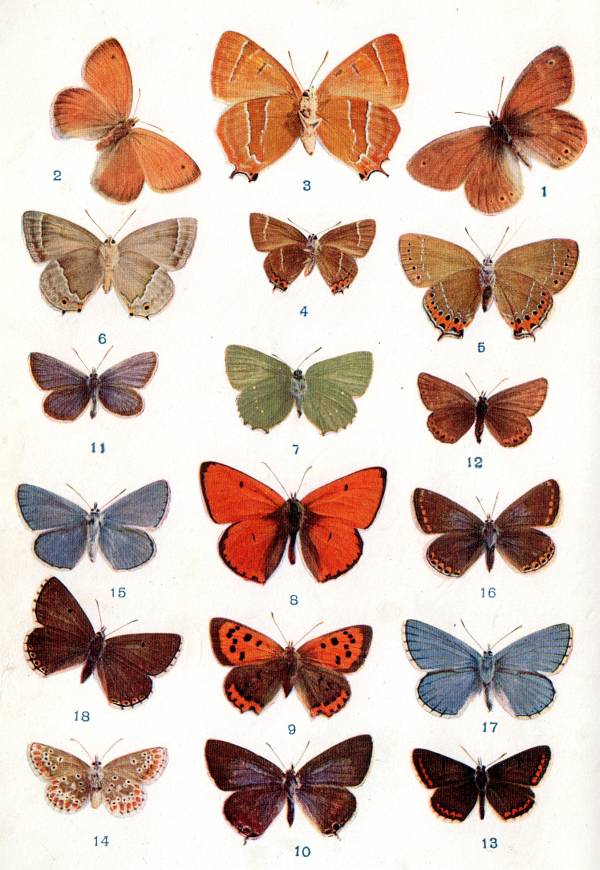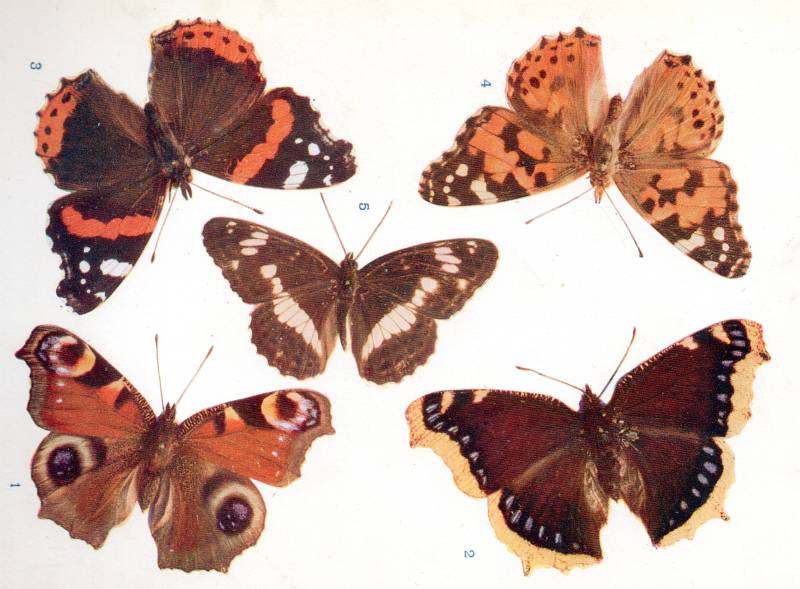
2 Small Heath | 1 Marsh Ringlet | 7 Green Hairstreak | 8 Large Copper extinct in UK (or reintroduce) | 9 Small Copper | 15 Common Blue M | 16 Common Blue F
Singing Nettles, Butterflies & Hedgehogs
Just a short note. Applies in England.
Butterflies Vanessid butterflies (red admirals, small tortoiseshells, peacocks, commas, painted ladies...) grow from caterpillars whose food plant is stinging nettles. These species are very fussy about food plants, and will not eat other vegetation. This is something many people don't understand! Female butterflies of those types lay their eggs on nettles. The caterpillars eat nettles and after a few moults of skin pupate. I suspect silica in the stings is an essential part of their food. Anyway, red admiral caterpillars when grown bite the stem of an upper leaf, then make a chrysalis under the flopped-down leaf. With luck they'll survive winter. Plant some buddleias nearby for an attractive display. Most gardeners (so far) regard nettles as weeds, so tuck them away in an unvisited corner.
Heath butterflies, Blue butterflies, Skippers, etc Meadow butterflies with food plants which are mostly grass were widespread for millennia. And with many wild flowers—flower chains, flower balls, flower language messages, were so common they were barely mentioned. I've just watched the BBC promote absurdly expensive reconstructions of plants in remote areas. But why not recreate British meadows and heaths? All that's needed in principle is grass, uncut and unsprayed. In practice, there are many grasses—cocks foot, couch grass, meadow soft grass, are just three I've seen. Many butterflies have subtle and detailed evolutionary adaptations to plants, which presumably developed over millions of years. If you have a favourite butterfly, with caterpillars which don't eat grass, you could try planting food plant(s) to see if they are attracted. You'd have to know the right seasons etc.
I was quite shocked to find that a friend of mine thought butterflies visited plants for nectar, as a drink! In fact the sugar in nectar is energy-giving. And plants can photosynthesize, i.e. use water and carbon dioxide to make sugars and then cellulose.
Hedgehogs have a range and like to explore neighbouring gardens; leave a ground-level gap for them. Make a winter nest of a tube with a simple box or container. With luck a hedgehog will find it, line it with leaves, and hibernate. They like to eat insects, and slugs—if you plant hostas, which attract slugs, don't put down poison but leave hedgehogs and hoglets to eat them.
RW 11 May 2019

From W S Furneax, Butterflies, Moths, Other Insects, and Creatures of the Countryside 1927
Red Admiral, Painted Lady, White Admiral, Peacock, Camberwell Beauty. (Latter is not native to Britain).